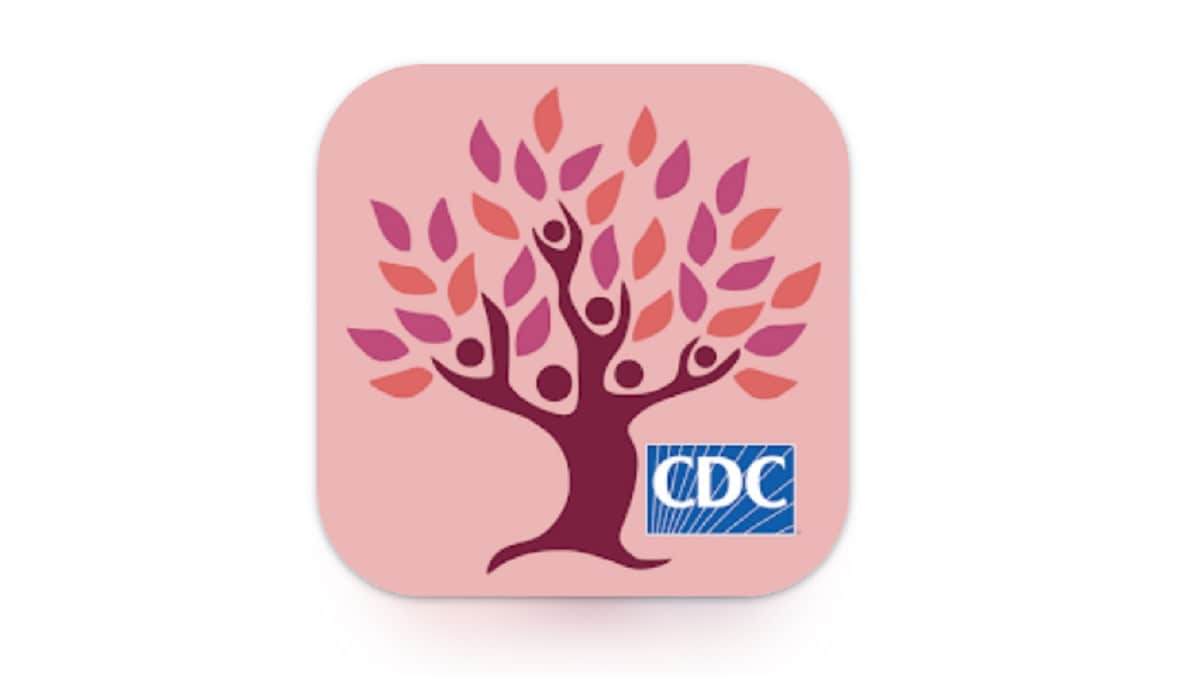At a glance
This page provides the algorithm that the My Family Health Portrait: Cancer app uses to evaluate risk for hereditary breast and ovarian cancer.

My Family Health Portrait: Cancer
CDC's My Family Health Portrait (MFHP): Cancer app helps you collect your family's history of cancer and understand your risk for breast, ovarian, and colorectal cancer. Android users can download the app from Google Play and iOS users can download the app from the App Store.
Note: This algorithm assesses risk based only on family health history. It does not account for other risk factors such as age, body mass index, physical activity, and alcohol use.
Risk factors
If any of 1 through 14 are positive, the result is "Increased Risk."
- You have a personal history of breast cancer.
- Any of your first-degree relatives (parents, siblings, or children) had breast cancer.
- You or any relative (parent, sibling, half-sibling, child, grandparent, aunt, or uncle) had ovarian, peritoneal, or fallopian tube cancer.
- You or any relative had pancreatic cancer.
- You or any relative had prostate cancer.
- You or any relative had breast cancer before age 40.
- You or any relative had breast cancer before age 50.
- You or any relative had triple-negative breast cancer.
- You or any relative had breast cancer before age 60.
- You or any relative had breast cancer in both breasts.
- You or a family member had male breast cancer.
- You are of Ashkenazi or Eastern European Jewish descent.
- You or a relative has a known BRCA1, BRCA2, or other pathogenic (disease-causing) mutation.
14. "Check here if your parents are related to each other in any way other than marriage" checkbox
This checkbox is not checked, and any of the following statements is true:
- You and two or more relatives on the same side of the family (mother's or father's side) had one of the cancers listed below.
- Three or more relatives on the same side of the family had one of the cancers listed below.
- One person had more than one type of the cancers listed below.
The types of cancer are:
- Breast
- Brain
- Colon
- Endometrial or uterine
- Gastric (stomach)
- Kidney
- Leukemia
- Pancreatic
- Prostate
- Thyroid
This checkbox is checked, and any of the following statements is true:
- You and two or more relatives had one of the cancers listed above.
- Three or more relatives had one of the cancers listed above.
- One person had more than one type of the cancers listed above.
"What to do next" output
All outputs include links to "Learn more about hereditary breast and ovarian cancer" and "Learn more about genetic testing and counseling."
If 1 is positive, the output is:
Talk with your healthcare provider about
- Your risk and family history of cancer
- Appropriate follow-up care and screening
Share this information with your family members
If you are a female younger than 40, 1 is negative, and 2 is positive, the output is:
Talk with your healthcare provider about
- Your risk and family history of cancer
- When to start mammograms or other screening
- If genetic counseling and screening are right for you
Share this information with your family members
If you are a female between 40 and 49, 1 is negative, and 2 is positive, the output is:
Talk with your healthcare provider about
- Your risk and family history of cancer
- When to start mammograms or other screening if you have not already started
- If genetic counseling and screening are right for you
Share this information with your family members
If you are a female who is 50 or older, 1 is negative, and 2 is positive, the output is:
Talk with your healthcare provider about
- Your risk and family history of cancer
- Starting mammograms or other screening if you are not already getting them
- If genetic counseling and screening are right for you
Share this information with your family members
If 1 and 2 are negative and one or more of 3 through 14 are positive, the output is:
Talk with your healthcare provider about
- Your risk and family history of cancer
- Appropriate screening and follow-up
- If genetic counseling and screening are right for you
Share this information with your family members
If you are male and none are positive or only 2 is positive, the output is:
- Be sure to update your family history with any new cancer diagnoses
- Share this information with your family members
If you are female and none are positive, the output is:
- Be sure to update your family history with any new cancer diagnoses
- Start getting mammograms at age 50
Data sources
This algorithm is based on information from:
- Genetic/Familial High-Risk Assessment: Breast, Ovarian, and Pancreatic (National Comprehensive Cancer Network)
- BRCA-Related Cancer: Risk Assessment, Genetic Counseling, and Genetic Testing (U.S. Preventive Services Task Force)
- Breast Cancer: Screening (U.S. Preventive Services Task Force)
